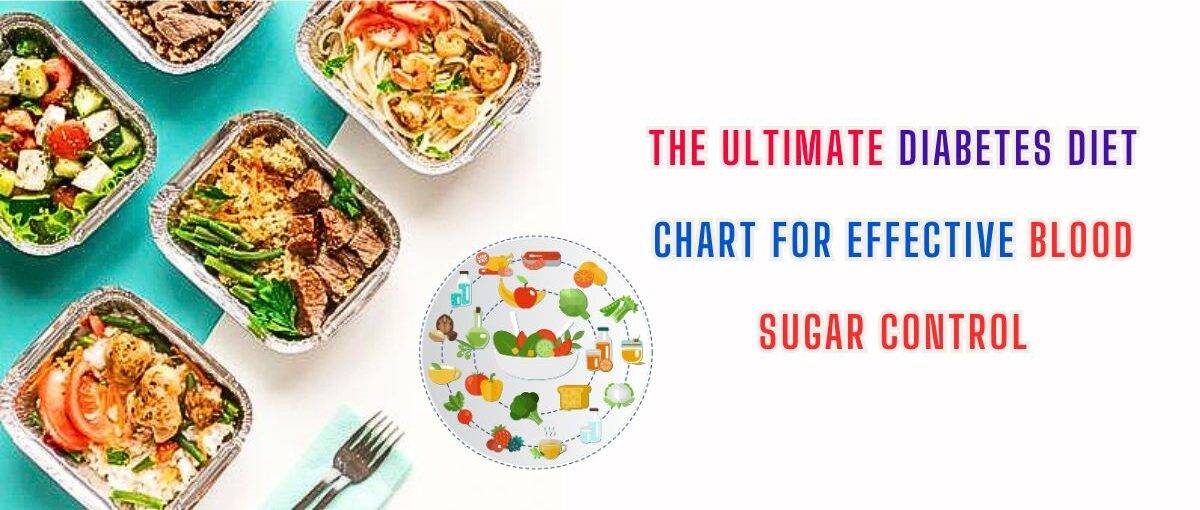BLOG
The Ultimate Diabetic Diet Chart for Effective Blood Sugar Control

Managing diabetes involves more than just taking medication; it also requires careful planning of your diet. A diabetic diet chart is an essential tool that helps people with diabetes control their blood sugar levels, maintain a healthy weight, and reduce the risk of complications. In this blog, we’ll walk you through the key components of a diabetic diet chart and provide practical tips to create a balanced and effective meal plan.
Understanding Diabetes and Diet
Diabetes is a chronic condition where the body either doesn’t produce enough insulin or doesn’t use it effectively. For people with diabetes, maintaining stable blood sugar levels is crucial to preventing complications such as heart disease, nerve damage, and kidney problems.
A well-structured diabetic diet chart is designed to help manage blood sugar levels by focusing on nutrient-dense foods, portion control, and balanced meals.
Key Components of a Diabetic Diet Chart
1. Carbohydrate Management
Carbohydrates have the most significant impact on blood sugar levels. Therefore, it’s crucial to manage carbohydrate intake by choosing complex carbs over simple sugars. Complex carbs, such as whole grains, legumes, and vegetables, are digested slowly, which helps prevent rapid spikes in blood sugar levels.
Sample Carbohydrate Sources:
- Whole Grains: Brown rice, quinoa, oats
- Legumes: Lentils, chickpeas, black beans
- Vegetables: Broccoli, spinach, sweet potatoes
2. Balanced Protein Intake
Protein helps in maintaining muscle mass and provides a feeling of fullness. Including lean protein in your diet can help manage blood sugar levels and prevent overeating. Aim for a mix of animal and plant-based proteins.
Sample Protein Sources:
- Lean Meats: Chicken breast, turkey
- Fish: Salmon, mackerel
- Plant-Based Proteins: Tofu, edamame, nuts
3. Healthy Fats
Healthy fats are essential for overall health but should be consumed in moderation. Opt for unsaturated fats found in nuts, seeds, avocados, and olive oil, while limiting saturated and trans fats.
Sample Healthy Fats:
- Nuts and Seeds: Almonds, chia seeds, flaxseeds
- Avocados: Rich in monounsaturated fats
- Olive Oil: A heart-healthy cooking oil
4. Fiber-Rich Foods
Fiber helps slow down the absorption of sugar and aids in digestion. A diet rich in fiber can help control blood sugar levels and improve overall gut health.
Sample Fiber Sources:
- Fruits: Apples, berries, pears (in moderation)
- Vegetables: Brussels sprouts, carrots, kale
- Whole Grains: Barley, whole wheat, farro
5. Portion Control
Managing portion sizes is vital for controlling calorie intake and blood sugar levels.
Here’s a sample meal plan to illustrate how to incorporate these principles into your daily diet:
Breakfast
- Oatmeal: Cooked oats with a tablespoon of chia seeds, topped with a few fresh berries.
- Egg Whites: Scrambled egg whites with spinach and mushrooms.
- Beverage: A cup of green tea or black coffee without sugar.
Mid-Morning Snack
- Greek Yogurt: Plain Greek yogurt with a sprinkle of nuts or seeds.
- Fruit: A small apple or a few slices of cucumber.
Lunch
- Grilled Chicken Salad: Mixed greens with grilled chicken breast, cherry tomatoes, cucumber, and a light olive oil vinaigrette.
- Whole Grain Roll: A small whole grain roll or a side of quinoa.
Afternoon Snack
- Hummus: A small serving of hummus with carrot sticks or whole grain crackers.
- Nuts: A handful of almonds or walnuts.
Dinner
- Baked Salmon: A portion of baked salmon with a side of steamed broccoli and a small serving of brown rice.
- Mixed Vegetables: A side of sautéed mixed vegetables, such as bell peppers and zucchini.
Evening Snack
- Herbal Tea: A cup of herbal tea without added sugars.
- Fruit: A small serving of berries or a pear slice.
Tips for Creating Your Own Diabetic Diet Chart
- Consult a Dietitian: Working with a registered dietitian or nutritionist can help tailor a diet plan specific to your needs and preferences.
- Monitor Blood Sugar Levels: Regularly checking your blood sugar levels can help you understand how different foods affect your body.
- Stay Hydrated: Drinking plenty of water throughout the day is essential for overall health and can help manage blood sugar levels.
- Read Labels: Be mindful of hidden sugars and carbohydrates in packaged foods by reading nutritional labels.
Conclusion
Creating a diabetic diet chart is a crucial step in managing diabetes effectively. By focusing on balanced meals that include complex carbohydrates, lean proteins, healthy fats, and fiber-rich foods, you can help stabilize blood sugar levels and support overall health. Remember, it’s essential to tailor your diet to your individual needs and preferences, and consulting with a healthcare professional can provide additional guidance and support.
-
 Advog 0.3 Tablet
Advog 0.3 Tablet
₹145.07Original price was: ₹145.07.₹130.56Current price is: ₹130.56. -
 Ajaduo 10mg/5mg Tablet
Ajaduo 10mg/5mg Tablet
₹788.00Original price was: ₹788.00.₹709.20Current price is: ₹709.20. -
 Amaryl 1mg Tablet
Amaryl 1mg Tablet
₹124.32Original price was: ₹124.32.₹111.89Current price is: ₹111.89.
The Role of Microbiome in Cancer Development and Treatment
-
Posted by
admin
- 0 comments
Top 5 Cancer Hospitals in Andhra Pradesh
-
Posted by
admin
- 0 comments
Six Most Common Heart Diseases in the Modern Era
-
Posted by
admin
- 0 comments
The Cost of Chemotherapy in Pune: A Comprehensive Guide
-
Posted by
admin
- 0 comments
Colorectal Cancer: Causes, Symptoms & Treatment
-
Posted by
admin
- 0 comments
Top 5 Cancer Hospitals in Maharashtra
-
Posted by
admin
- 0 comments
Celebrating World Health Day: Prioritizing Global Wellness in a Post-Pandemic World
-
Posted by
admin
- 0 comments
Top 5 Cancer Hospitals in Sikkim
-
Posted by
admin
- 0 comments
The Role of Biopsies in Cancer Diagnosis and Monitoring
-
Posted by
admin
- 0 comments
The Benefits and Risks of Hormonal Therapy in Cancer Treatment
-
Posted by
admin
- 0 comments
Understanding Carcinogens and Their Impact on Health
-
Posted by
admin
- 0 comments
Brain Cancer: Causes, Symptoms & Treatment
-
Posted by
admin
- 0 comments













